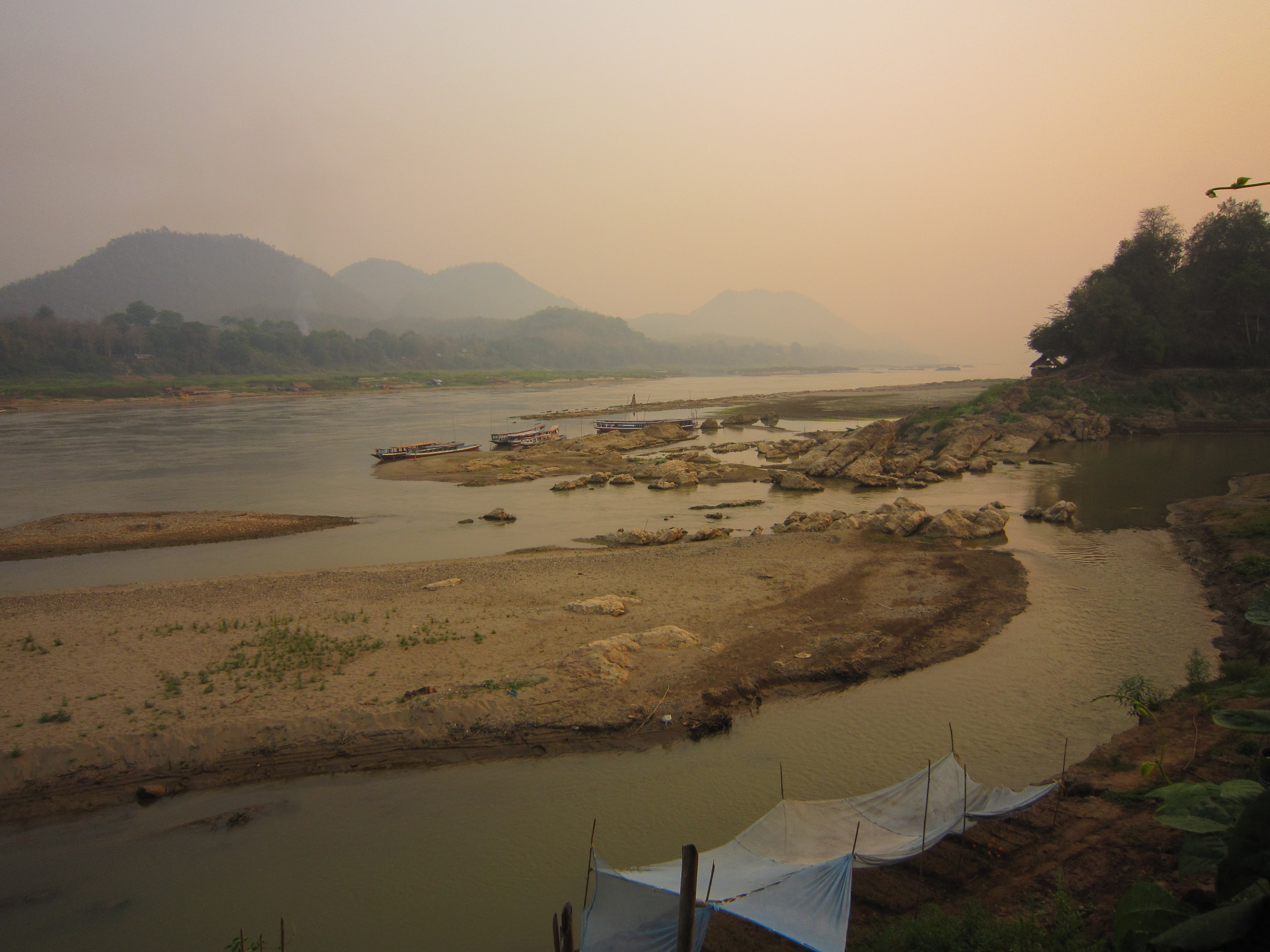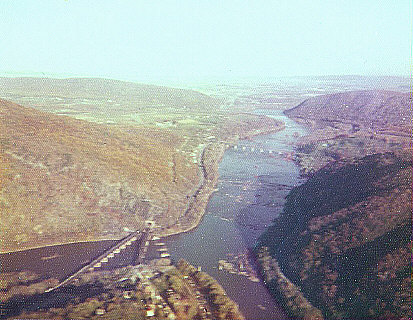Tributary on:
[Wikipedia]
[Google]
[Amazon]
 A tributary, or affluent, is a stream or river that flows into a larger stream or
A tributary, or affluent, is a stream or river that flows into a larger stream or "opposite to a tributary"
PhysicalGeography.net, Michael Pidwirny & Scott Jones, 2009. Viewed 17 September 2012. Distributaries are most often found in river deltas.
 "Right tributary", or "right-bank tributary", and "left tributary", or "left-bank tributary", are terms stating the orientation of the tributary relative to the flow of the main stem river. These terms are defined from the perspective of looking downstream (in the direction the water current of the main stem is going).Bisson, Peter and Wondzell, Steven
"Right tributary", or "right-bank tributary", and "left tributary", or "left-bank tributary", are terms stating the orientation of the tributary relative to the flow of the main stem river. These terms are defined from the perspective of looking downstream (in the direction the water current of the main stem is going).Bisson, Peter and Wondzell, Steven
"Olympic Experimental State Forest Synthesis of Riparian Research and Monitoring"
United States Forest Service, p. 15 (1 December 2009). An early tributary is a tributary that joins the main stem river closer to the main river's source than its end. Similarly, a "late tributary" joins the main river much further downstream, closer to the main river's end point. In the U.S., where tributaries sometimes have the same name as the river into which they feed, they are called forks. These are typically designated by compass direction. For example, the American River in California receives flow from its North, Middle, and South forks. The Chicago River's North Branch has the East, West, and Middle Fork; the South Branch has its South Fork, and used to have a West Fork as well (now filled in). Forks are sometimes designated as right or left. Here, the handedness"is from the point of view of an observer facing upstream. For instance, Steer Creek has a left tributary which is called Right Fork Steer Creek.
File:Amazonriverbasin basemap.png, The basin of the Amazon River is a system made up of many tributary streams. The streams shown on the map besides the Amazon are tributaries of the Amazon.
File:Benuerivermap.png, The
{{Authority control
Physical geography
River morphology
Rivers
Water streams
main stem
In hydrology, a mainstem (or trunk) is "the primary downstream segment of a river, as contrasted to its tributaries". Water enters the mainstem from the river's drainage basin, the land area through which the mainstem and its tributaries flow. ...
(or parent) river or a lake. A tributary does not flow directly into a sea or ocean. Tributaries and the main stem river drain the surrounding drainage basin of its surface water and groundwater
Groundwater is the water present beneath Earth's surface in rock and Pore space in soil, soil pore spaces and in the fractures of stratum, rock formations. About 30 percent of all readily available freshwater in the world is groundwater. A unit ...
, leading the water out into an ocean.
The Irtysh is a chief tributary of the Ob river and is also the longest tributary river in the world with a length of .
The Madeira River
The Madeira River ( pt, Rio Madeira, link=no ) is a major waterway in South America. It is estimated to be in length, while the Madeira-Mamoré is estimated near or in length depending on the measuring party and their methods. The Madeira is ...
is the largest tributary river by volume in the world with an average discharge of .
A confluence, where two or more bodies of water meet, usually refers to the joining of tributaries.
The opposite to a tributary is a distributary, a river or stream that branches off from and flows away from the main stream.PhysicalGeography.net, Michael Pidwirny & Scott Jones, 2009. Viewed 17 September 2012. Distributaries are most often found in river deltas.
Terminology
 "Right tributary", or "right-bank tributary", and "left tributary", or "left-bank tributary", are terms stating the orientation of the tributary relative to the flow of the main stem river. These terms are defined from the perspective of looking downstream (in the direction the water current of the main stem is going).Bisson, Peter and Wondzell, Steven
"Right tributary", or "right-bank tributary", and "left tributary", or "left-bank tributary", are terms stating the orientation of the tributary relative to the flow of the main stem river. These terms are defined from the perspective of looking downstream (in the direction the water current of the main stem is going).Bisson, Peter and Wondzell, Steven"Olympic Experimental State Forest Synthesis of Riparian Research and Monitoring"
United States Forest Service, p. 15 (1 December 2009). An early tributary is a tributary that joins the main stem river closer to the main river's source than its end. Similarly, a "late tributary" joins the main river much further downstream, closer to the main river's end point. In the U.S., where tributaries sometimes have the same name as the river into which they feed, they are called forks. These are typically designated by compass direction. For example, the American River in California receives flow from its North, Middle, and South forks. The Chicago River's North Branch has the East, West, and Middle Fork; the South Branch has its South Fork, and used to have a West Fork as well (now filled in). Forks are sometimes designated as right or left. Here, the handedness"is from the point of view of an observer facing upstream. For instance, Steer Creek has a left tributary which is called Right Fork Steer Creek.
Ordering and enumeration
Tributaries are sometimes listed starting with those nearest to the source of the river and ending with those nearest to the mouth of the river. TheStrahler stream order
In mathematics, the Strahler number or Horton–Strahler number of a mathematical tree is a numerical measure of its branching complexity.
These numbers were first developed in hydrology by and ; in this application, they are referred to as t ...
examines the arrangement of tributaries in a hierarchy of first, second, third and higher orders, with the first-order tributary being typically the least in size. For example, a second-order tributary would be the result of two or more first-order tributaries combining to form the second-order tributary.
Another method is to list tributaries from mouth to source, in the form of a tree structure, stored as a tree data structure.
Gallery
Benue River
The Benue River (french: la Bénoué), previously known as the Chadda River or Tchadda, is the major tributary of the Niger River. The river is approximately long and is almost entirely navigable during the summer months. The size of its bas ...
is fed by multiple tributaries originating in the Adamawa Plateau; many of the highest tributaries are seasonal streams. The Benue is itself a major tributary of the Niger.
File:Huairivermap.jpg, Huai River (itself a tributary of the Yangtze) and tributaries
File:Jialingrivermap.png, Jialing River
The Jialing River, formerly known by numerous other names, is a major tributary of the Yangtze River in the Sichuan Basin. It is named after the Jialing Valley in Feng County, Shaanxi through which it flows.
The Jialing River's most notable ...
(itself a tributary of the Yangtze) and tributaries
File:Liaorivermap.png, The Liao River is a much simpler example of a river basin with tributaries. The main tributaries noted on this map are the Hun River, Taizi River, Dongliao River
Dongliao County () is a county of western Jilin province, Northeast China. It is under the administration of Liaoyuan City. County has its name because there is an origin of Dongliao River.
Administrative Divisions
Towns: Baiquan
Baiquan () i ...
, Xinkai River, Xiliao River, Xar Moron River and the Laoha River. The Xiliao River's tributaries are the Xar Moron and Laoha rivers.
File:Mekongbasin.jpg, The Mekong
The Mekong or Mekong River is a trans-boundary river in East Asia and Southeast Asia. It is the world's twelfth longest river and the third longest in Asia. Its estimated length is , and it drains an area of , discharging of water annual ...
is a trans-boundary river, originating in the Tibetan Plateau
The Tibetan Plateau (, also known as the Qinghai–Tibet Plateau or the Qing–Zang Plateau () or as the Himalayan Plateau in India, is a vast elevated plateau located at the intersection of Central, South and East Asia covering most of the Ti ...
. Its upper tributary river systems (e.g. ) are restricted to narrow gorge
A canyon (from ; archaic British English spelling: ''cañon''), or gorge, is a deep cleft between escarpments or cliffs resulting from weathering and the erosive activity of a river over geologic time scales. Rivers have a natural tendency to cu ...
s, but the tributaries that feed its lower reaches (e.g. the Mun River
The Mun River ( th, แม่น้ำมูล, , ), sometimes spelled ''Moon River'', is a tributary of the Mekong River. It carries approximately of water per year.
Geography
The river begins in the Khao Yai National Park area of the Sank ...
) cover larger areas.
File:Vermilion wabashrivermap.png, The water basin of the Wabash River
The Wabash River (French: Ouabache) is a U.S. Geological Survey. National Hydrography Dataset high-resolution flowline dataThe National Map accessed May 13, 2011 river that drains most of the state of Indiana in the United States. It flows from ...
; the other rivers (not including the Ohio River
The Ohio River is a long river in the United States. It is located at the boundary of the Midwestern and Southern United States, flowing southwesterly from western Pennsylvania to its mouth on the Mississippi River at the southern tip of ...
) are tributaries of the Wabash River. The Vermillion River (and its forks
In cutlery or kitchenware, a fork (from la, furca 'pitchfork') is a utensil, now usually made of metal, whose long handle terminates in a head that branches into several narrow and often slightly curved tines with which one can spear foods eit ...
) is a highlighted example of a tributary of the Wabash River. The Wabash River is also a tributary of the Ohio River, which in turn is a tributary of the Mississippi River
The Mississippi River is the List of longest rivers of the United States (by main stem), second-longest river and chief river of the second-largest Drainage system (geomorphology), drainage system in North America, second only to the Hudson B ...
.
File:Yamunarivermap.jpg, The Yamuna
The Yamuna ( Hindustani: ), also spelt Jumna, is the second-largest tributary river of the Ganges by discharge and the longest tributary in India. Originating from the Yamunotri Glacier at a height of about on the southwestern slopes of B ...
is the second-largest tributary river of the Ganges
The Ganges ( ) (in India: Ganga ( ); in Bangladesh: Padma ( )). "The Ganges Basin, known in India as the Ganga and in Bangladesh as the Padma, is an international river to which India, Bangladesh, Nepal and China are the riparian states." is ...
and the longest tributary in India
India, officially the Republic of India (Hindi: ), is a country in South Asia. It is the List of countries and dependencies by area, seventh-largest country by area, the List of countries and dependencies by population, second-most populous ...
. It flows almost parallel to the Ganges about its right bank for before merging with it at the Triveni Sangam, Allahabad
Allahabad (), officially known as Prayagraj, also known as Ilahabad, is a metropolis in the Indian state of Uttar Pradesh.The other five cities were: Agra, Kanpur (Cawnpore), Lucknow, Meerut, and Varanasi (Benares). It is the administra ...
.
See also
*Estuary
An estuary is a partially enclosed coastal body of brackish water with one or more rivers or streams flowing into it, and with a free connection to the open sea. Estuaries form a transition zone between river environments and maritime environm ...
References